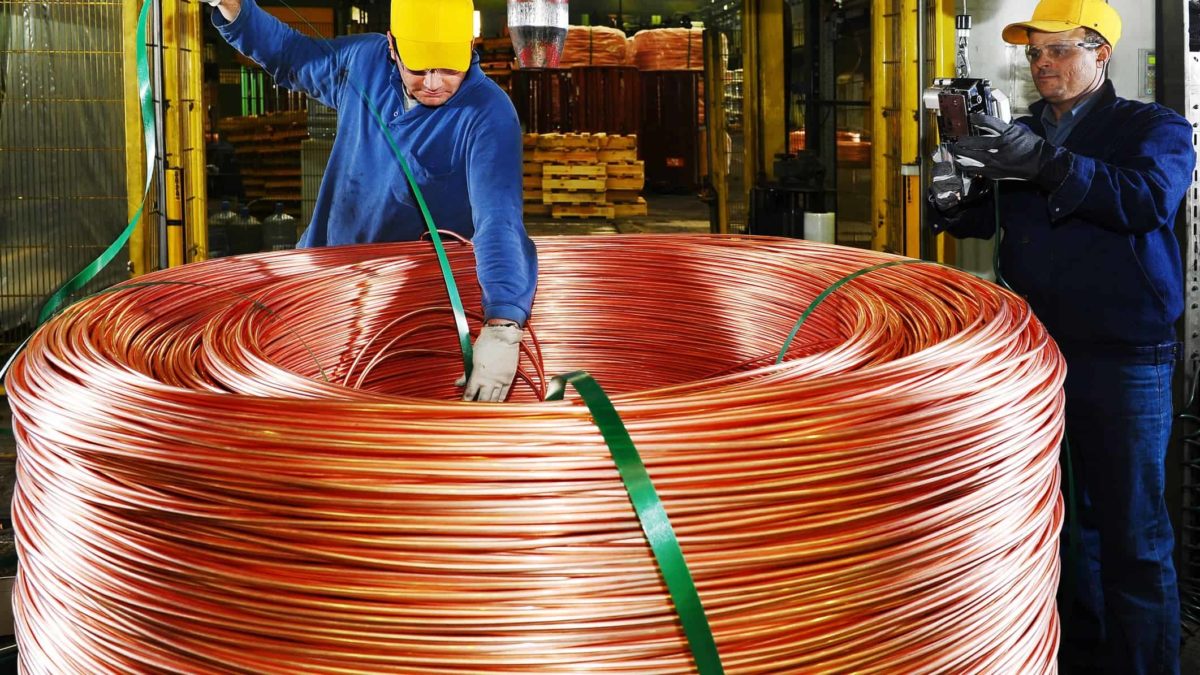Rio Tinto Ltd (ASX: RIO) started out 150 years ago as a copper miner in Spain in 1873.
Formed by a group of London investors, the company took its name from Spain's Rio Tinto region, where it purchased an ancient loss-making mine from the Spanish Royal Family and set out to redevelop it.
The mine was in an area of Spain's south that was known for its copper reserves. It had been mined on and off by several different civilisations for more than 5,000 years.
When Rio Tinto bought the mine, it was the dawn of the Second Industrial Revolution.
The birth of electrification meant there was a burgeoning global demand for copper to power rapidly expanding rail networks, to make wires and pipes for modern water and sewage systems, and to manufacture telephones, which would be invented by Alexander Graham Bell in just a few years' time.
The applications for copper as the world electrified were vast, and Rio Tinto profited from providing one of the essential metals for the era — and doing it better than others.
Rio Tinto introduced modern mining techniques and brought in machinery never seen before in the region to extract the red metal from rock that had been discarded by previous generations.
Within 10 years, Rio Tinto was the world's biggest copper producer, and its flagship copper mine became one of the most profitable in Europe.
Now, the era of decarbonisation and the green energy transition is taking Rio Tinto back to its roots.
World needs 700 million tonnes of copper over 20 years
Copper is set to play a major role in the next global power generation pivot, just like it did in the 1870s.
Rio Tinto CEO Jakob Stausholm reiterated the company's continuing purpose — "finding better ways to provide the materials the world needs" — in his speech given to shareholders at Rio's annual general meeting (AGM) earlier this month.
Chair Dominic Barton told investors at the AGM that the International Energy Agency estimates the world will need 700 million tonnes of copper over the next 20 years to meet its Paris Agreement climate goals.
He put that demand into perspective.
"That is the same amount as we have produced since we existed," said Barton of Rio's 150th year in operation.
Copper is used in electric vehicles, wind turbines, and solar energy systems.
Wilsons equity strategist Rob Crookston says EVs require about 3x more copper than conventional cars, and solar and offshore wind projects require about 3x to 7x more copper per megawatt of installed capacity than fossil fuels.
Barton described the energy transition as providing "a further opportunity for Rio Tinto" over and above its current dominant mining segment, which is iron ore.
Barton said:
… we have a critical role to play in enabling the energy transition, supplying essential minerals, including copper, lithium, high-grade iron ore and aluminium, all of which are vital for the transition to a low carbon economy.
Rio Tinto isn't the only ASX 200 miner recognising the importance of copper and wanting to share in the profits of the green energy transition.
Rival ASX 200 miner BHP Group Ltd (ASX: BHP) bought out ASX copper pure-play Oz Minerals in May for $9.6 billion.
How Rio Tinto shares are returning to copper
Rio Tinto has four key mining segments — iron ore, copper, aluminium, and other minerals.
In 2022, copper was the smallest earning segment worth US$2.376 billion of underlying EBITDA, or 8.8% of total EBITDA. Iron ore was the largest, contributing US$18.612 billion in EBITDA or 69% of earnings.
But the copper segment is set to grow.
When Stausholm took over as Rio Tinto CEO in January 2021, one of his first priorities was to take charge of the expansion of the 66%-owned Oyu Tolgoi copper mine in Mongolia.
That mine is in a handy location in the Gobi Desert, about 100km north of the Chinese border. China alone consumes almost half of the world's current copper output.
Production at the underground expansion began in March.
Stausholm says Oyu Tolgoi is "on track to be the fourth-largest copper mine in the world".
Rio Tinto expects the mine to produce an average annual output of 500,000 tonnes from 2028 to 2036.
Rio Tinto shares ownership of the largest copper mine in the world, Escondida, in Chile. It owns 30%, while joint venture partner BHP owns 57.5%. The rest belongs to the Japanese consortium, JECO Corporation.
Escondida produces around 1.2 million tonnes of copper a year, accounting for 5.5% of global production.
Rio Tinto also owns the Kennecott copper mine in Utah, in the United States.
In September last year, Rio Tinto announced it would spend $55 million to start underground mining and expand production at Kennecott.
Rio Tinto Copper CEO Bold Baatar said:
This investment will allow us to quickly bring additional volumes of high quality copper to the market and build our knowledge and capabilities as we evaluate larger scale underground mining at Kennecott.
We are progressing a range of options for a significant resource that is yet to be developed at Kennecott, which could extend our supply of copper and other critical materials needed for electric vehicles and renewable power technologies.
New copper assets under exploration
In March, Rio Tinto announced a joint venture with First Quantum Minerals to develop the La Granja copper project in Peru.
Rio bought the project from the Government of Peru in 2006. It's one of the largest undeveloped copper deposits in the world.
Under the proposed deal, First Quantum Minerals will acquire a 55% stake in the project and shepherd it through its feasibility study and toward development.
In Arizona in the US, Rio Tinto is waiting for the US Forest Service to complete its Final Environmental Impact Statement (FEIS) for the Resolution Copper Project.
In Australia, drilling, fieldwork and study activities are continuing at the Winu copper-gold project in Western Australia ahead of applications for regulatory and other approvals.
2023 copper production forecasts
In its first quarter production report, Rio Tinto downgraded its copper production forecast for 2023 from between 650kt to 710kt to between 590kt and 640kt.
This is largely due to short-term issues, including the conveyor outage at Kennecott and geotechnical challenges at Escondida.
But it's worth noting that the new 2023 forecast is still 15% to 23% higher than the 2022 output of 521kt.
The Rio Tinto share price finished up 2.2% on Friday at $107.72.









